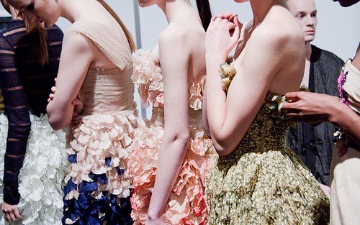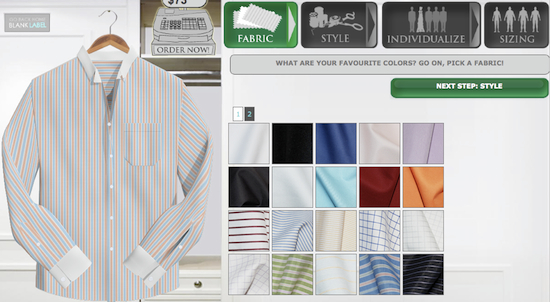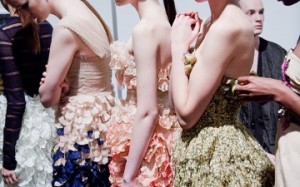Fashion editors and department store buyers have long had the biggest say in what parts of designer collections make it to market. This pattern is changing, however, thanks to a more social web culture and better tools to facilitate online voting, purchasing and even customization.
In an effort to drive deeper engagement between designers and those who purchase their clothes and accessories, a mix of established and lesser-known brands are now giving consumers opportunities to choose what gets produced and, in some cases, even what gets designed.

The result is both a more engaged shopper and less waste as manufacturers and retailers are better able to estimate demand before garments are produced.
Be the Buyer

“Fashion is morphing into a two-way dialogue,” says Vivian Weng, who launched fashion ecommerce venture FashionStake with fellow Harvard Business School alum Daniel Gulati last fall.
Although FashionStake has since evolved into a somewhat more traditional ecommerce site, the two recognized that consumers “were craving an opportunity to somehow be a part of the creative process.”
Weng and Gulati also wanted to discover new talent in the fashion industry. They created a platform where designers and shoppers could collaborate to fund the creation of new work through pre-orders. Clothes were only manufactured after enough orders were placed.
Older dot-com companies such as eBay are likewise capitalizing on the shift. At New York Fashion Week this past February, designer Derek Lam unveiled a series of 16 original designs, which eBay shoppers were then invited to vote upon. More than 120,000 votes were cast to determine the five dresses (plus a surprise sixth) shown above.
In both cases, consumers — not buyers — were given the final say (collectively, at least) on what items became mass-manufactured. The most popular items were produced in quantities to match demand.
Be the Designer

Some brands are going a step further by inviting shoppers directly into the design process. Burberry is following the lead of startups such as Blank Label (pictured above) and Gemvara, which allow customers to choose between patterns, materials and other details in step-by-step web apps to create “one of a kind” apparel and accessories. Later this year, Burberry will let customers design their own trench coats.
Using a web application, consumers will be able to choose the style, color and details of their own Burberry-branded “Bespoke” trenches. With more than 12 million possible combinations, it’s possible to create something pretty unique.
It’s an efficient model because garments are only produced after an order is placed, thus negating any possibility of excess inventory.
Accessories designer Rebecca Minkoff has allowed consumers even more freedom. She turned to online fashion styling community Polyvore to help design her next “morning-after clutch” earlier this year. She supplied users with images of signature materials, including leather, hooks, tassels, studs, zippers and straps, and asked them to get creative.
Nearly 4,000 users submitted more than 6,000 different designs in the course of a week. The winning clutch debuted during Minkoff’s first runway show during New York Fashion Week in February and went on sale this spring under the Minkoff label.
Minkoff believes that collaborations between consumers and designers are “a great way for all designers to truly understand what their customer wants from their brand,” she says. “Having my customers be a part of this collaboration has truly shown that they understand my aesthetic and design theory.” Minkoff says that she would consider participating in similar projects in the future.
Is the Notion of “The Designer” Becoming Obsolete?
Although there are new opportunities for engagement between designers and consumers, Polyvore co-founder Jess Lee is aware that some people think these collaborations compromise the artistic integrity of the design process.
“Some people people feel that crowdsourced design takes away from the specialness of artistic creativity,” she says. What’s important, she adds, is to preserve the vision of the designer which, ultimately, all of the projects cited above do.
Lam agrees, noting in an earlier interview with Mashable, “At no point [during my collaboration with eBay] was my vision compromised — that’s why crowdsourcing in this way was such a great concept. I was able to maintain my creative vision and still execute the design process as I normally do.”
Although Derek Lam, Rebecca Minkoff and Burberry Chief Creative Officer Christopher Bailey have invited consumers to become part of the design process, they retain control, ensuring that the products express their style and choice, while engaging the consumer in a new way.
“Customers need to be part of a personal experience,” Weng says. “More and more websites will try to build direct connections with their customers to directly engage them.”

 Follow
Follow